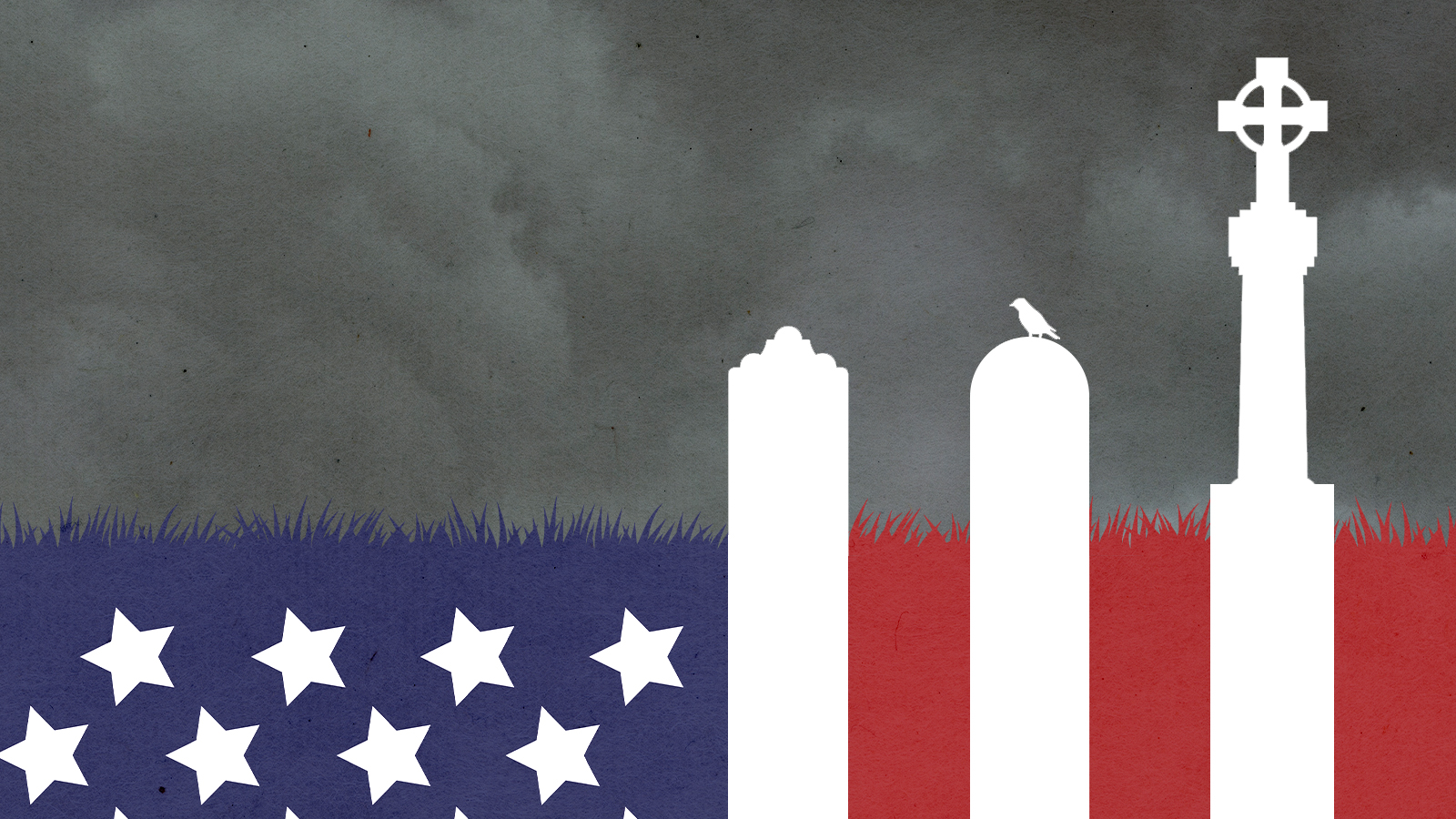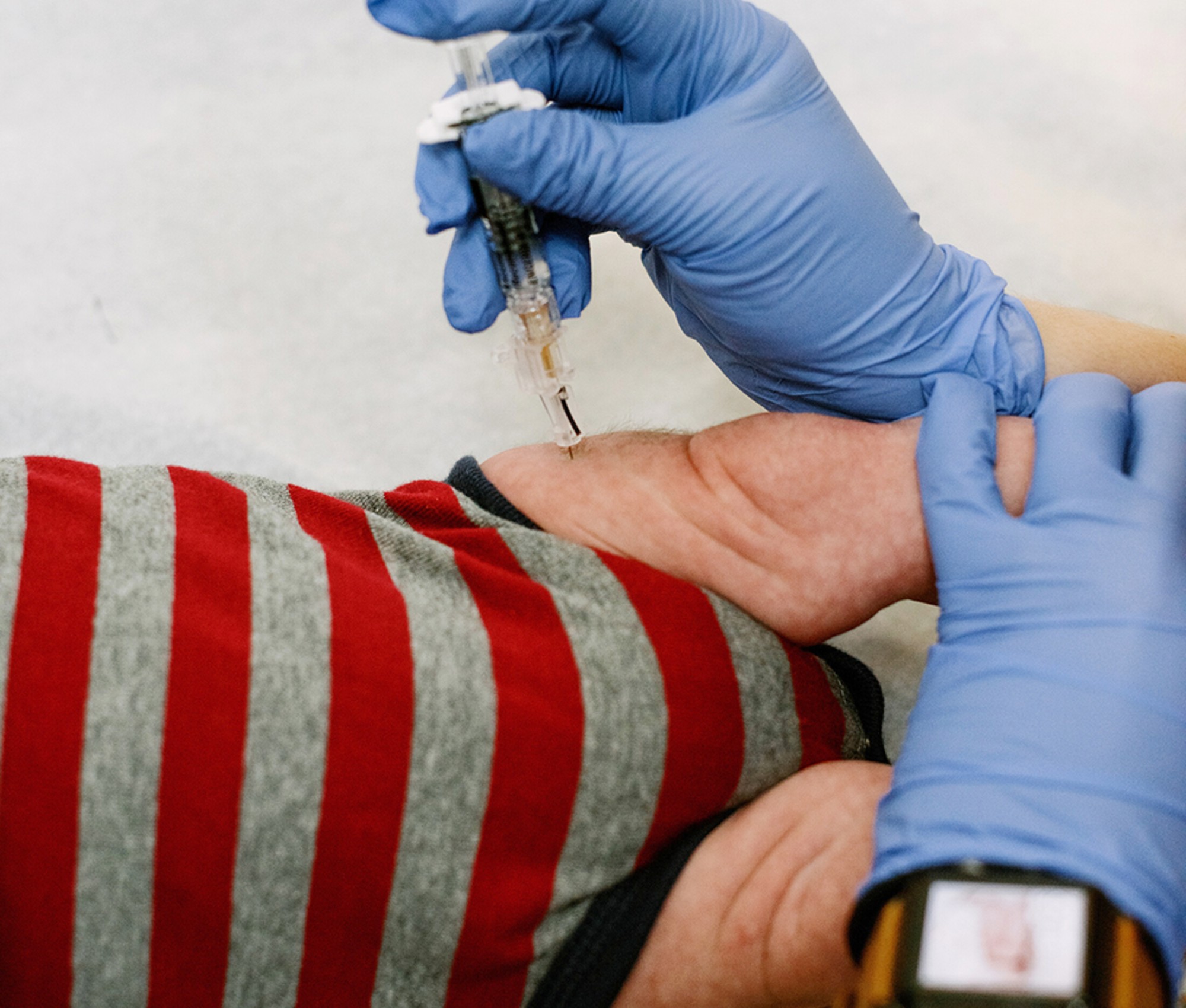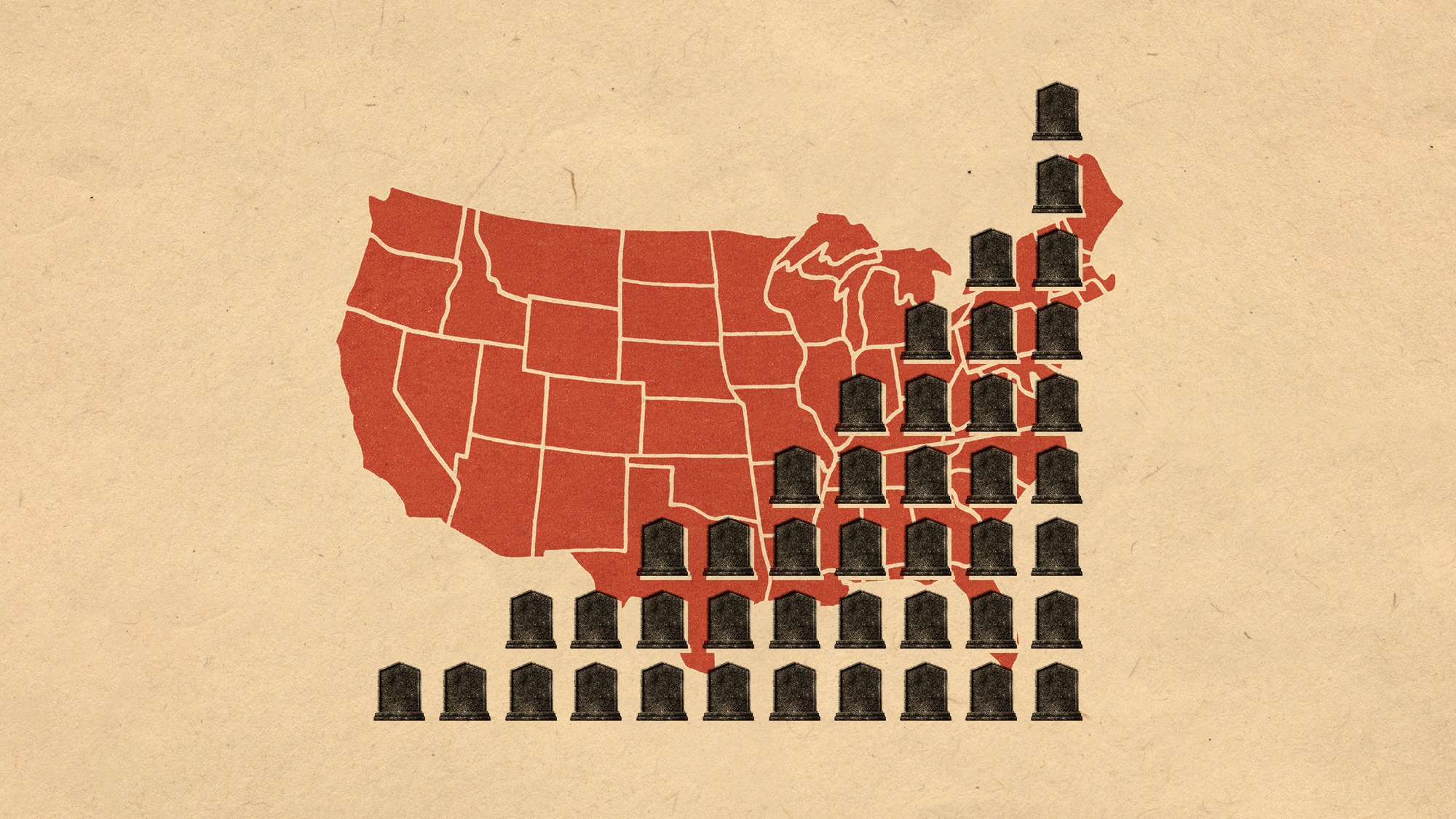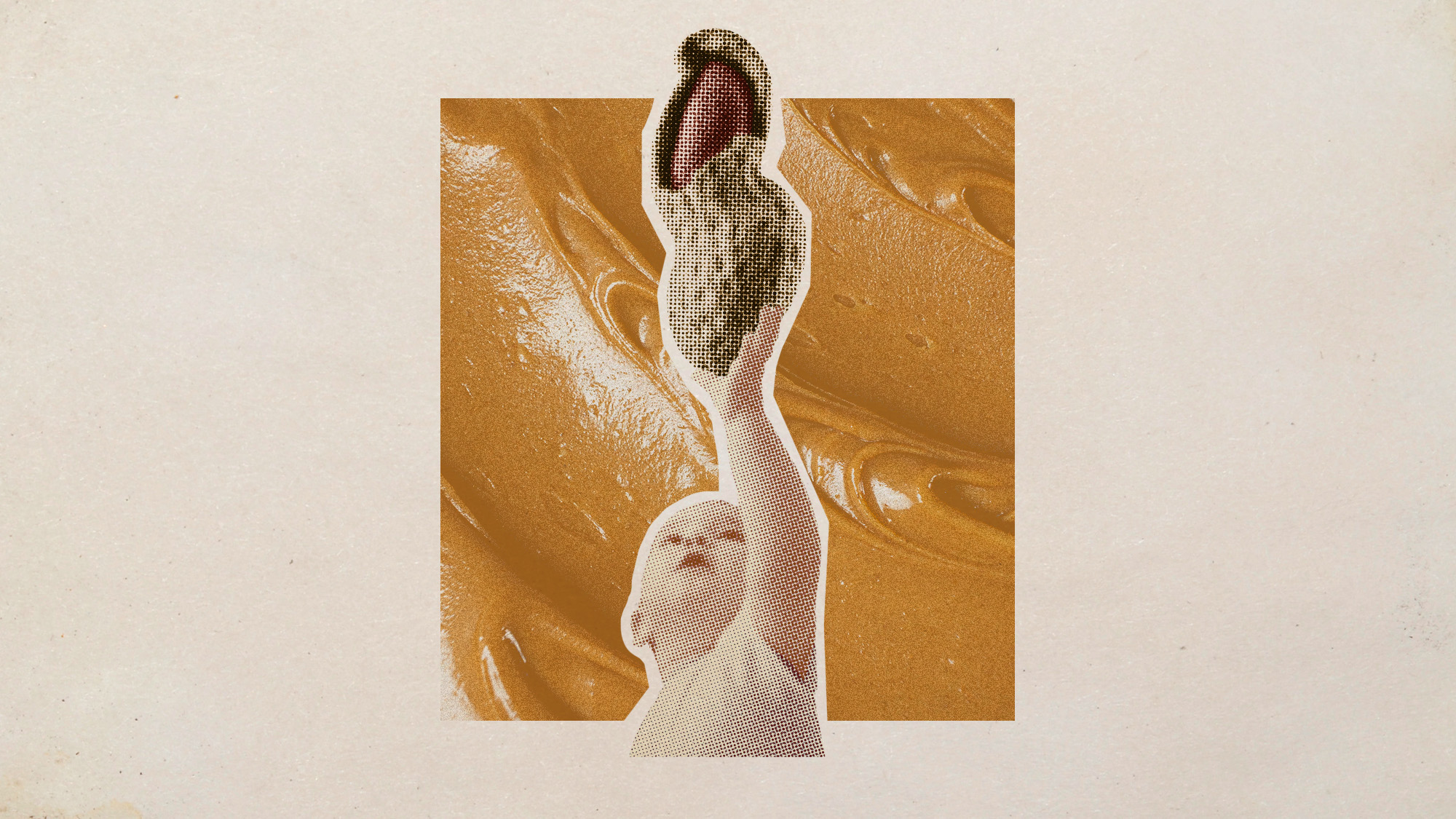America's declining life expectancy, explained
It's not just COVID

Americans aren't living as long as they once did.
For the second straight year, life expectancy in America has dropped significantly. The Centers for Disease Control and Prevention on Dec. 22 announced that "life expectancy at birth for the U.S. population decreased from 77 years in 2020 to 76.4 years in 2021." In 2019, the average American could expect to live to be 79 years old. Now that number is 76.
Indigenous groups, which include American Indian and Alaska native people, have suffered the worst: Life expectancy in those communities has dropped to 65.2 years from 71.8 in 2019 compared to 76.4 in 2021 from 78.8 in 2019 for white people per Politico. The U.S. life expectancy is now the lowest it has been since 1996. Why is American health doing so poorly? Here's everything you need to know:
The Week
Escape your echo chamber. Get the facts behind the news, plus analysis from multiple perspectives.

Sign up for The Week's Free Newsletters
From our morning news briefing to a weekly Good News Newsletter, get the best of The Week delivered directly to your inbox.
From our morning news briefing to a weekly Good News Newsletter, get the best of The Week delivered directly to your inbox.
Why is life expectancy dropping?
The two stand-out reasons for the drop are COVID-19 and overdose deaths. The number of COVID deaths increased by 20 percent from 2020 to 2021, making it the third largest cause of death, Politico continues. Accidental deaths, which include overdose deaths, were the fourth largest cause of death.
The conditions of the pandemic, "had a magnifying effect on an already-devastating overdose crisis, and exacerbated many of the stressors in society that make people more vulnerable to taking drugs," commented Dr. Nora Volkow, director of the National Institute on Drug Abuse. Deaths from drug overdoses increased by 16 percent in 2021 compared to 2022, clocking in at just under 107,000 casualties. This is largely attributed to the growing opioid epidemic and the rise in fentanyl usage in the U.S.
The top two contributors to American deaths were heart disease and cancer. Some of the heart disease deaths may actually be related to the coronavirus, Time reports — both because the pandemic overwhelmed understaffed hospitals, but also because a COVID infection "can damage the heart, and is thought to have raised patients' risk of dying."
"It's not a good year for the data, let's put it that way," commented CDC statistician Kenneth Kochanek.
A free daily email with the biggest news stories of the day – and the best features from TheWeek.com
Is the U.S. doing worse or better than other countries during the pandemic?
Worse, at least compared to our peer nations. A study in August showed that eight comparable nations actually had a "bounce back" of life expectancy following the worldwide decline due to COVID-19, The Washington Post reports. These included Belgium, Switzerland, Spain, and France. "With the vaccine available, and other pandemic control measures, a lot of other countries did recover," said Steven Woolf, professor at the Virginia Commonwealth University's School of Medicine.
The U.S. was among 12 other countries where life expectancy continued to drop, including Germany, Chile, Bulgaria, Greece, and Estonia, the Post continues. Some of the disparity is probably due to America's "don't tread on me" conservative political culture: "Those countries had more successful vaccination campaigns and populations that were more willing to take behavioral measures to prevent infections, such as wearing masks," notes The New York Times.
Is this just a short-term thing?
Unfortunately, no. "American life expectancy began to stagnate around 2010 — while other developed countries continued to see gains," Stat News observes. In 2018, two years before the pandemic began, The Washington Post pointed out that the U.S. was already experiencing the "longest sustained decline in expected life span at birth in a century, an appalling performance not seen in the United States since 1915 through 1918."
Researchers have struggled to find a silver bullet explanation for why American health has declined so precipitously. Theories that stagnating life expectancy can be attributed to obesity rates and opioid drug use "fail to explain a problem that feels broader," The New York Times reported back in 2016. Instead, the Los Angeles Times reported the next year, the problem appears to be driven by a range of factors, including "diseases linked to social and economic privation, a healthcare system with glaring gaps and blind spots, and profound psychological distress."
Why are indigenous communities hit so hard by this trend?
It can't be overstated: COVID has hit native communities with particular viciousness. "American Indians are 2.2 times more likely to die from COVID-19 and 3.2 times more likely to be hospitalized for the virus," NPR reports.
The biggest factor: poverty. One in four Native Americans lives below the poverty line, The New York Times reports. That leads to "inadequate access to health care, poor infrastructure, and crowded housing, much of it the legacy of broken government promises and centuries of bigotry." What's more, the newspaper points out, discrimination has been linked to "the erosion of mental and physical health, as has exposure to polluted air and water."
Dr. Ann Bullock, a member of the Minnesota Chippewa tribe who formerly served at the Indian Health Services agency, summed it up for the newspaper: "This is simply what happens biologically to populations that are chronically and profoundly stressed and deprived of resources."
What can be done?
First of all, there is some good news in the numbers. "Mortality's been a little better in 2022 than it was in 2020, so I think it's likely that we would see maybe a slight increase in life expectancy," the CDC's Robert Anderson told Reuters. But it's tough to say whether that trend will last through the end of the year: Deaths usually rise during the winter months.
Even if life expectancy rebounds slightly this year, though, many observers say the latest news means America needs to reconsider both health and economic policy as the country continues to emerge from the pandemic. The trend of shortening life spans is a societal problem, after all. "Life expectancy isn't really a prediction for a single individual," Kate Sheridan says at STAT News. "It's more like a check engine light — an indicator for the health of society as a whole."
Update Dec. 22, 2022: This piece has been updated with the latest figures from the CDC.
Joel Mathis is a writer with 30 years of newspaper and online journalism experience. His work also regularly appears in National Geographic and The Kansas City Star. His awards include best online commentary at the Online News Association and (twice) at the City and Regional Magazine Association.
-
 7 bars with comforting cocktails and great hospitality
7 bars with comforting cocktails and great hospitalitythe week recommends Winter is a fine time for going out and drinking up
-
 7 recipes that meet you wherever you are during winter
7 recipes that meet you wherever you are during winterthe week recommends Low-key January and decadent holiday eating are all accounted for
-
 Nine best TV shows of the year
Nine best TV shows of the yearThe Week Recommends From Adolescence to Amandaland
-
 Deaths of children under 5 have gone up for the first time this century
Deaths of children under 5 have gone up for the first time this centuryUnder the radar Poor funding is the culprit
-
 A fentanyl vaccine may be on the horizon
A fentanyl vaccine may be on the horizonUnder the radar Taking a serious jab at the opioid epidemic
-
 Health: Will Kennedy dismantle U.S. immunization policy?
Health: Will Kennedy dismantle U.S. immunization policy?Feature ‘America’s vaccine playbook is being rewritten by people who don’t believe in them’
-
 More adults are dying before the age of 65
More adults are dying before the age of 65Under the radar The phenomenon is more pronounced in Black and low-income populations
-
 Ultra-processed America
Ultra-processed AmericaFeature Highly processed foods make up most of our diet. Is that so bad?
-
 Peanut allergies have plummeted in children
Peanut allergies have plummeted in childrenUnder the radar Early introduction could be an effective prevention method
-
 Climate change is getting under our skin
Climate change is getting under our skinUnder the radar Skin conditions are worsening because of warming temperatures
-
 Is this the end of ultraprocessed foods?
Is this the end of ultraprocessed foods?Today's Big Question California law and the MAHA movement are on the same track


